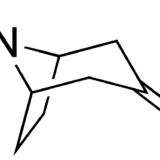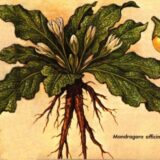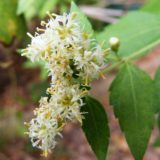Table of Contents
Active Plant Constituents (and Corresponding Neurotransmitters)
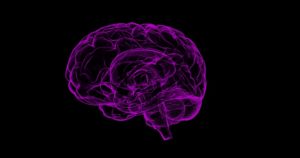
What Are Neurotransmitters?
Neurotransmitters can also be called “chemical messengers” and are chemicals themselves, substances which are released from presynaptic nerve endings. They then make the journey across the cleft and create influence within the postsynaptic membrane. The best way to understand neurotransmitters is with an analogy, such as to imagine the neurotransmitters as pixels on a computer screen. The video card (presynaptic nerve endings) generate the code necessary for the electricity to make the journey across the HDMI cable (presynaptic cleft) and to the screen (postsynaptic membrane), where the electricity is interpreted into individual pixels. That’s pretty much how it happens in the brain with these neurotransmitters…only instead of the “electricity” being interpreted into color, it is instead interpreted into various changes in activity across the nervous system (and the chemicals which are released throughout the body). There are so many neurotransmitters responsible for sending many messages to the body and nervous system, some which have many useful purposes in medicine and some which are used for other things (such as recreation, sleep aid, etc).
List of Neurotransmitters and Their Primary Purposes
This is a complete list of all endogenous neurotransmitters. This means, those neurotransmitters which are naturally occurring in the body. This list is in alphabetical order.
- 5-MeO-DMT – Released in near-death experiences, and in death, likely to help the body cope with the extremity of the pain and situation. It is naturally occurring in the human body despite being an illegal substance. It’s true uses in the body are not exactly known.
- Acetylcholine – The responsible neurotransmitter for activating muscles in the body.
- Anandamide – This word literally comes from the ancient Hindu and Pali root Ananda, meaning “bliss” or “joy.” And that is exactly its use in the body.
- Angeldustine (and ketamine) – Also known as “Phencyclidine,” PCP or sometimes even “rocket fuel.” It is synthesized, meaning it is non-naturally occurring in the human body, but it is still treated (for whatever reason) as an endogenous neurotransmitter. It is used as an intoxicant, pain reliever (analgesic) and has been used for sleep. It is illegal scheduled, or otherwise controlled nearly everywhere around the world.
- Adrenaline – Typically used for energy, focus, and as a stimulant. It is naturally produced in the human body by the adrenal glands and some neurons in the brain.
- β-carbolines – Also known as Norharmane, these alkaloids are found naturally occurring in the human body in form of tryptoline and pinoline. They are typically used to prevent dimethyltryptamine breakdown, making some other substances psychoactive. They are also useful in regulating sleep and stress.
- β-phenethylamine – A naturally occurring neurotransmitter that works as a stimulant to the central nervous system in the human body.
- Bufotenine – Bufotenine is a naturally occurring, organic tryptamine found in humans and very similar in chemical structure to many psychedelics (5-MeO-DMT, DMT, and even psilocin).
- Codeine – Codeine is an opiate that has been most frequently used for pain relief or to treat coughs. Codeine is what is created in the liver from the opiates that come from the poppy plant.
- Dopamine – Dopamine is a naturally occurring neurotransmitter in the human body, and mostly influences what is known as “reward-motivated behavior.” Many popular drugs release a lot of dopamine due to how good it makes one feel.
- Endorphins (and encephalins) – Naturally produced by the central nervous system and the pituitary gland in human beings, and binds to theμ-opioid receptors. They are naturally produced in the human body as a response to pain.
- Endovalium (and diazepam) – There are naturally occurring proteins secreted in the brain which have Valium and diazepam-like effects.
- GABA – GABA is a naturally occurring non-essential amino acid that can be found in all regions of the brain. It is responsible for decreasing neuronal excitability and is used for its anti-anxiety, relaxing effects.
- Glutamate – Glutamate is a non-essential α-amino acid, which means that the body naturally produces it. Glutamate is helpful in memory, learning and other cognitive functions.
- Glycine – The simplest amino acid, and a building block for many analgesics.
- Morphine – Most commonly known for it’s pain relief application, Morphine is an opiate that acts on the central nervous system and is both synthetically and naturally produced. Morphine is part of what is metabolized in the body from the poppy plant.
- N,N-DMT – Like its close cousin 5-MeO-DMT, N,N-DMT is a naturally occurring psychedelic which is released in the body during death. Also like its close cousin, it is illegal despite existing in every person.
- Noradrenaline – Also known as norepinephrine, Noradrenaline is a key neurotransmitter produced in the brain and body.
- Serotonin – Serotonin is naturally occurring neurotransmitter primarily found in the GI tract and the central nervous system. It contributes very greatly to happy, “feel good” moods. Serotonin can have an affect on so many cognitive and body functions, from memory and learning, to sleep and appetite.
Whereas these neurotransmitters are naturally occurring in the human body, they can also be found in comparable forms throughout the plant kingdom, called “analogs.”
What is a Neurotransmitter Analog?

An analog in terms of plants and drugs (or neurotransmitters in this specific case), is a chemical or substance that has similar pharmacological effects as the neurotransmitters. Technically, this makes them “functional analogs,” as opposed to structural analogs, which are literally chemicals with similar structure (not necessarily similar effects). Just because a chemical is structurally similar to another, does not guarantee functional similarity in the body. Functional analogs, however, may not have similar structural properties and still produce similar effects. Albeit, there are plenty of functional analogs for neurotransmitters produced in plants which are also similar in structure. However, ignoring the term “structural analog” altogether for now, it is quite easy to find exogenous analogies to the endogenous neurotransmitters listed above. That is, there are many natural substances produced by plants and fungi which are able to mimic the effects of the above neurotransmitters.
List of Exogenous Analogies to Endogenous Neurotransmitters
This is a list of comparable, plant-based exogenus analogs to common endogenous neurotransmitters (or the same versions that are also found in plants and animals, and in exogenous form). This list is in alphabetical order.
- 5-MeO DMT
- Amphetamine (and various derivatives, like MDMA or ephedrine)
- Atropine
- β-phenethylamine
- Bufotenine
- Cocaine
- Diazepam
- Harmaline (or Harmine)
- Hyoscyamine
- Ibogaine
- Ibotenic Acid
- Lysergic Acid (various derivatives)
- Mescaline
- Muscimol
- N,N-DMT
- Nicotine
- Opiates
- PCP (or Ketamine)
- Psilocybin (or Psilocin)
- Scopolamine
- Strychnine
- THC (or Cannabinoids)
- Yohimbine
These analogs all come from psychoactive plants or are otherwise synthesized outside of the body. A closer look at some of these active constituents can reveal their effects in the body.
Active Constituents and Substance Types Found in Psychoactive Plants
This is a list of the most important substances that are found in psychoactive plants, in alphabetical order, along with their effects in the body. These substances are (or have been) important in medicine, religion, or hold significant recreational value.
5-MeO-DMT

5-MeO-DMT is one of the most well known DMT variants and is typically smoked or vaporized for recreation or spiritual journey. It is present in the skin secretions of the Colorado River Toad, and a few other species. The mucus secretions come from two glands located on the neck. Many other toads secret toxic bufotoxine from these glands…but this special toad instead yields dried mass measuring 15 percent 5-MeO-DMT. DMT is typically described as an enlightening, hallucinogenic experience. DMT is also present in the human body and is produced in large quantities in near-death experiences, during birth, and during death.
Atropine
Atropine is isolated from many plants, but first from the deadly nightshade in 1820. It turns out that it is very closely related to cocaine (chemically). It also shares relation with scopolamine and hyoscyamine. Atropine is typically used for its excitation, euphoria, social lubrication, and hallucinations. It can be a strong intoxicant, though it has not had any strong cultural significance (that is known, yet anyway).
β-Carboline
Technically the β-Carbolines are considered part of the indole alkaloids. They are very close in relation to tryptamines and for this reason, many plants containing β-Carbolines are used for their psychoactive properties. There are many plants which have these psychoactive β-Carbolines including: Acacia, Amanita muscaria, Banisteriopsis caapi, Mucuna pruriens, Passiflora spp., Peganum harmala, Phalaris arundinacea, Phalaris spp., Psychotria spp., Virola spp., and more). In fact, they are even present in the more popular nicotine (found in tobacco). In modern times, β-Carbolines are popularly used as ayahuasca analogs. β-Carbolines influence mood, dreaming and sleep, and can even create visions.
β-Phenethylamines
β-Phenethylamines, like mescaline, usually come from cacti, and can be accompanied by other potentially psychoactive substances, such as candicine, hordenine, and macromerine. This is one of the least studied substances on the list, and thus leaves the room for incredible human experimentation opportunities. Many β-Phenethylamines are synthesized, including the ever-popular MDMA.
Bufotenine
Bufotenine has been long known, being first isolated in 1893 from toad secretions. It is also known as 5-OH-DMT. It is present in a number of fungi and plants as well and is very closely related to 5-MeO-DMT and N,N-DMT. Still, it is unknown if it is a true hallucinogen. There are reports that indicate it is both, hallucinogenic and non-hallucinogenic. Usually the reports which indicate no visual hallucinations, still indicate changes to mood and emotion, including euphoria. It has been injected, orally consumed, smoked, snorted as a snuff and even turned into ointments.
Caffeine
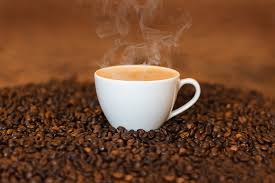
Caffeine is one of the most common psychoactive substances consumed across the planet. It was first isolated from the coffee bean, but has since been found in many plants. Caffeine helps eliminate fatigue and stimulate mental acuity. There are more than 3 dozen plants regularly used for their caffeine content (either as an ingredient in a product or supplement, or consumed directly in some way for its caffeine content). Undesirable effects typically begin at around the 300-400 mg dose range, however, lately caffeine has been receiving a lot of negative attention due to overdoses and irresponsible commercial products (mostly energy drinks and supplements cramming too much caffeine into their formulas); Though in the right doses, caffeine is very useful!
Cocaine
Cocaine is one of the most well-known drugs on the planet, and it has made a lot of people a lot of money. But it is also very closely related in structure to tropine and some other tropane alkaloids. Technically, although it is admittedly hard to improve, cocaine may be the most consumed psychoactive active plant constituent in the world. Pure cocaine is soluble in alcohol, a few oils, and a couple other substances, however, it is not soluble in water. Cocaine salts, however, is soluble in water. Cocaine was first isolated in 1860 and has been used for so many things (addiction treatment, analgesic, stimulant euphoria, and a feeling of confidence. Cocaine is popular around the entire world, even found in hair samples of ancient Egyptian mummies (or some other substance was consumed which metabolized the same way cocaine does). Some cultures combine their cocaine with other substances (betel, teas, lime, etc). Some cultures have higher purity percentages than others (with Europe, for example, ranking at only about 30 percent pure on average).
Codeine
Codeine has been known in the modern world since 1832, being isolated from opium. It is also found naturally in humans and even in low 20 mg dosages can create feelings of stimulation, warmth, and intoxicating-like effects. It is most commonly sold as a cough suppressant or sleep aid (sedative). It is very regularly used for recreation and has significant prominence in the music industry (jazz, rock, r&b, psychedlia, rap and hip hop). It is controlled nearly everywhere around the world, requiring a prescription in most cases.
Coumarins
Coumarins is found in many different forms throughout a number of plants, all of them being psychoactive. They typically have a vanilla-like scent (the coumarins) and is soluble in alcohol, ether and various essential oils. There have been rashes of times throughout history where some cultures use coumarins along with tobacco or green tea (either in a smokeable roll with the tobacco or a beverage with the tea). Coumarins are banned as a food additive in the United States and scheduled in other places around the world.
Cytisine
Cytisine is known to stimulate the central nervous system. It encourages excitation, but also hallucinations. Because of the hallucinations, it can sometimes create a delirium, and in higher doses can cause muscle spasms. Cytisine works by binding to the acetylcholine (Ach) receptors throughout the body. The effects can be very similar to nicotine in lower doses, only if nicotine were also a visual hallucinogen. Sometimes cytisine is still used as a tobacco substitute, or used in small doses in some products to create a nicotine effect.
Diazepam

Diazepam is also referred to as benzodiazepine and Valium (commercially sold as well). It is well-known for its sedative and anxiety-reducing effects. The benzodiazepine receptor is in nearly every vertebrate on Earth. This has been suggested to mean that it was an earlier development in evolution, probably because fear and anxiety is essential to survival. Still, diazepam reduces these anxieties and worries, calming the mind and body. Diazepam is both synthesized and naturally occurring in the body as a neurotransmitter. Valium, a close cousin “Xanax” and similar brands are one of the most widely used (and thus also most widely prescribed) medicines for sedation, sleeping disorders and anxiety in most of the Western World. The effects and properties of Diazepam can greatly differ and be profoundly affected by taking it with alcohol, though this has led to a lot of dangers in recreational use. Diazepam is a prescription medication or otherwise scheduled or controlled in nearly all of the world (including the United States)
Diterpenes
Diterpines are one of the substances on this list which are non-nitrogeneous, making them instead, natural substances of a combination of 4 isoprene groups. They are in many plants and essential oils. Diterpenes are used to moderate plant growth, as they can be used to inhibit the reproduction of certain bacteria. Some diterpenes are sweet and used as actual sweeteners (either for Yerba Mate tea, as in tradition, or in modern teas in the Western World); the most common brand name of diterpene sweetener, Stevia, is well known to be used this way. Still, there are many “tougher” diterpenes which are used for hallucinogenic (such as salvinorin A, derived from Salvia divinorum) or other psychoactive properties (such as Aconitine, derived from Monkshood).
Ephedrine
Ephedrine is a powerful stimulant which was first isolated in 1887. It has had prominent medical significance (treating asthma, for example) since about 1925. Ephedrine is present in nearly all species of ephedra. There are other plants that contain ephedrine as well. Sometimes it is present in plants that are smoked as tobacco or marijuana substitutes. Ephedrine is a sympathomimetic substance and increases the neurotransmitter noradrenaline (the primary responsible chemical responsible for the stimulating effects). It has had extreme cultural significance in terms of being used for its psychoactive stimulating effects throughout many cultures, including but not limited to: Australian Aboriginals, Mexican and Native American tribes, African tribes (Khat), Egyptians, Central and South American tribes, and even cultures of the western worlds in Europe and the United States alike. It is also commonly used in western culture as a precursor for MDMA, and is controlled, scheduled or otherwise illegal in many countries around the world. In the United States, Ephedrine is listed as a List I Substance, meaning it is marked as an important substance for the production or synthesis of illegal substances.
Ergot Alkaloids
Ergot alkaloids are derivatives of lysergic acid. They are indole alkaloids and present in so many plants and fungi. Usually, the plants are climbing plants, or vines of some kind (they can still be floral). Unfortunately there are two different groups of Ergot alkaloids, the first can cause gangrenous ergotism, which is a deadline disease no one wants to catch. The second group of Ergot alkaloids, however, consist of the good stuff: psychoactive substances with hallucinogenic effects. Further unfortunately, both of these groups of Ergot alkaloids can be found in the same plant. Ergine, or LSA (also known as lysergic acid amid or lysergic amide) is a strong psychoactive that can be compared to the effects of LSD. In fact, LSD is actually a slight chemical variant of LSA, not the other way around. A great way to remember it is: LSA is the natural acid, LSD is the synthesized acid. LSA has had a significant impact on a variety of cultures, both in medicine and for recreation. One of the best sources of LSA, Hawaiian Baby Woodrose seeds, can be regularly found for sale untreated, and as safe to consume as it gets, within reason. Usually a dose to achieve LSD-like effects, would require consuming 7-12 seeds and is almost associated with a nausea in the beginning (most people throw up about 30 minutes in, and then the trip is reportedly quite nice and “well worth it”). Edge77.com sells high quality, untreated seeds in a resealable pack that works great.
Essential Oils
Essential Oils can be misunderstood, as people have been using this as a sort of “buzz word.” In reality, Essential Oils means complex mixtures of acids, alcohols, aldehydes, carbohydrates, esters, ethers, ketones and sulfur compounds. They are super volatile and always evaporate at low temperature. They do produce independent scents, which is why they are often marketed for as a perfume. Essential Oils can produce very real aphrodisiac properties, just in scent alone (proven). Many psychoactive plants, however, contain Essential Oils and sometimes these oils are the only active constituents! A lot of these Essential Oils have verified psychoactive effects.
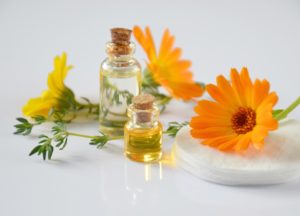
They have been used for healing and recreation. Here are the more notable psychoactive Essential Oils:
- Eugenol is a stimulating and anesthetic psychoactive Essential Oil. It can be found in the essential oil of clove.
- Myristicin is one of the most well-known hallucinogenic components of a number of essential oils. It is in dill, lovage, parsnips and even parsley. Many speculate that Myristicin metabolizes into MDA (an amphetamine derivative).
- Safrole is, like Eugenol, found in cloves. It is also present in the sassafras tree. This is one of the most popular MDMA precursors (although it can be used to synthesize many other similar drugs). It is thought to metabolize into amphetamine derivatives and is a List 1 substance in the United States (watched as a precursor), and regulated elsewhere in the world as well.
- Thujone is present in the Tansy and has been used to create strong beer and intoxicating beverages. Its effects are often compared to the effects of THC.
- Ud Oil is found in lignum aloe and aloe wood. It is well known for its ability to produce psychoactive effects. It is traditionally used as an incense to produce notable stress-relief. It has been used to treat mental disturbances and emotional imbalances.
Harmaline (or Harmine)
Harmaline may go by many names, but it is always a β-Carboline substance. It is most popularly used as an extract from the plants Banisteriopsis caapi and Peganum harmala. Harmaline is able to reduce excitability of the parasympathetic system. This had proven beneficial to many Parkinson’s patients, but also induces a sensation of euphoria. The effects are typically relaxing, stress-relieving, and lowered inhibitions. Perhaps comparable to THC or diazepam to some extent.
Ibogaine
Ibogaine is very closely related to the β-Carbolines, it is even very similar to Harmaline. It was first isolated from Tabernathe iboga in 1901. Ibogaine possesses both, stimulating and hallucinogenic effects. It has been used as a remedy in many medicinal applications, but also has been used by shaman and medicine men. In modern times, it is most notably used to treat addictions, most specifically heroin and opioid addictions, as it dramatically reduces negative withdraw effects when consumed in high doses.
Ibotenic Acid
Ibotenic acid is an amino acid and was first isolated in 1964 from Amanita strobiliformis (a Japanese mushroom). It is very closely related in structure to the neurotransmitter glutamate and has been suggested to behave very similarly in the nervous system. Typically as little as 50 mg can constitute as a psychoactive dose. Ibotenic acid is usually converted into muscimol in preparation for storage. It is a legal substance, available in most chemical stores and its effects are similar to muscimol. Thus, Ibotenic acid is a structural analog to glutamate (possibly functional as well) and a functional analog to muscimol.
Indole Alkaloids
Typically Indole alkaloids are only present in a select group of plants. Some of the largest groups of Indole alkaloids include the β-Carbolines (including harmaline and harmine), bufotenine, 5-MeO-DMT and N,N-DMT, ergot alkaloids, ibogane alkaloids, psilocybin and psilocin, strychnane alkaloids, and Yohimbine. Many Indole alkaloids are used as ayahuasca additives. Almost all of the indole alkaloids are psychoactive or occur in plants with psychoactive purposes.
Mescaline

Mescaline is one of the most well-known psychoactive substances of the hallucinogenic variety. It comes from cacti. Specifically it is found most abundantly in mescal buttons, which are the crown tops of the Peyote cactus. It is not only found in the Peyote, though, and has been harvested from a number of other species as well. Depending upon preparation, usual doses are about 220 mg of mescaline HCL, or about 300 mg of mescaline sulfate. They are both salt form, as the drug should be water-soluble. Pure mescaline is very potent and only requires about 5 mg per kilogram body weight in order to achieve a hallucinogenic dose.
Mescaline has a long history of being studied, researched, and experimented with. As far back as the 19th century, experiments and recorded trials have been documented involving Mescaline. Famous “Brave New World” writer, Aldous Huxley, described his experiences and thoughts on Mescaline in his books “The Doors of Perception” and “Heaven and Hell.” In fact, he is responsible for a lot of the cultural significance the drug has since had in modern Western culture. It was also featured throughout a large portion of the Hunter S Thompson tribute movie “Fear and Loathing in Las Vegas.” Mescaline is illegal or otherwise controlled in the United States and in many countries around the world.
Morphine
Morphine was first synthesized by a lab assistant in 1803. It was also determined that Morphine’s primary purpose in opium was for sedative, sleep-inducing properties. It is possible Morphine is present in many other plants, however, it is most notoriously available in the Opium plant, Papaver somniferum. It is also present in Wild Lettuce, or Lactuca virosa. The discovery of Morphine has been hailed as the most important discovery in pharmacology to date by many prominent scientists and pharmacology experts. In fact, there is even a medal that is still awarded in honor of Friedrich Wilhelm Adam Serturner, who was responsible for the initial isolation of Morphine.
Morphine is an endogenous neurotransmitter, meaning it is naturally occurring and found in most higher vertebrates, such as humans. This means Morphine is natural in the human body. It is present in breast milk and the cerebrospinal fluid. Codeine is very closely related to Morphine and they are likely biosynthesized naturally from dopamine. The average oral dose for effective relief is about 30 mg. Morphine is generally used for pain, sedation or as an anesthetic. In addition to a few other obscure purposes, Morphine is also a powerful aphrodisiac and can induce many sexual fantasies and wild sexual images.
Muscimol
Muscimol also goes by the name “Agarin” and is an amino acid. It was first discovered back in 1964, an active constituent of Amanita pantherina. It is technically the decarboxylated product of ibotenic acid (previously discussed and also on this list). It is an analog of GABA, and binds to the GABA receptors. It has been more recently discovered (as of 1975) that Amanita muscaria mushrooms (fly agaric) also contain Muscimol. Muscimol is known to be an inebriating intoxicant.
Nicotine
Nicotine is a pyrrolidine and a pyridine alkaloid. It is also a tobacco alkaloid. Nicotine has been found in so many different species of plants. Some of the most common include the plant families: Araceae, Asclepiadaceae, Equisetaceae, Erythroxylaceae, Leguminosae, Lycopodiaceae, and Solanaceae (nightshades). The nightshade family is obviously the most popularly used for nicotine, as it includes Nicotiana rustica and Nicotiana tabacum, the two most commonly smoked nicotine-producing plants. Nicotine is unique in that it is more easily absorbed through the mucous membranes and can even be absorbed through the skin (hence smokers patches). It is broken down in an oxidation process and results in strongly stimulating effects on the central nervous system. Nicotine is very similar to how the neurotransmitter acetylcholine functions in the peripheral nervous system.
N, N-DMT
N,N-DMT was first synthesized in 1931, however, it was also isolated as a natural substance in 1955. It can be found in a ton of plants in its natural form, including plants from the families: Agaricaeae, Aizoaceae, Gramineae, Lauraceae, Leguminosae, Malpighiaceae, Myristicaceae (Virolas), Ochnaceae, Polygonaceae, Rubiaceae, and Rutaceae. DMT can be found as a free base and as an aqueous (HCL), as well as a fumarate (salt form). DMT is naturally occurring in human beings. DMT is typically smoked or vaporized with an effective dose considered to be about 15-30 mg. Some people have experimented with much higher amounts (up to 100 mg). Sometimes DMT is injected (with a typical dose of about 1 mg per kilogram of body weight). DMT is considered a neurotransmitter when naturally released in the body, and the highest levels are released during death. It is for that reason it has been suggested DMT is responsible for the “white light” and feelings of euphoria felt before death. DMT is illegal in nearly all countries around the world, including the United States.
Opiates

There are many different constituents of opium. Opium is one of the most important drugs in history, and has been hailed as one of the most important (if not the most important) achievement in the history of pharmacology. Morphine is isolated from opium earlier on. Then heroin would be synthesized in 1989, exceeding the potency of Morphine. There are even greater strength opiates that have been since synthesized that are even more powerful than heroin. Fentanyl is an example of one of these stronger substances, holding a potency of up to more then seven thousand times stronger than Morphine. Codeine is also an important alkaloid that has been isolated from opium. Opium is illegal in nearly all of the world to possess without a prescription, including in the United States.
Papaverine
Papaverine is one of the many components that has been isolated from opium. It is not nearly as strong in a psychoactive sense as many other alkaloids which have been isolated or synthesized from opium (morphine, codeine, heroin, fentanyl, etc.), however, it serves tremendous purpose as an effective vasodilator. Typical doses are about 200-300 mg. It has also been researched as a possible fix to impotency (as of 1987), however, was largely abandoned mostly due to unfavorable side effects. It seems even after sexual activity was achieved, it would continue to create erections for days later with no sexual arousal, inflammation and mild pains. Still, it is sometimes sold in a suppository form and in a hydrochloride solution for injection with a prescription.
Psilocybin (and Psilocin)
Psilocybin was discovered and isolated by Albert Hofmann in 1955. It is a tryptamine and indole alkaloid. Psilocin is created when psilocybin releases it from the phosphoric acid group. Basically, psilocybin is metabolized into psilocin in the body, which is the responsible constituent for the psychoactive properties of the substance. Still, psilocybin and psilocin are very closely related to baeocystin, which ultimately ended up being considered a biogenic precursor to psilocybin. So many experiments (scientific, educational and for recreation) exist in great recorded detail.
Typically, people take about 10-15 mg of psilocybin, orally for a psychedelic trip. Some experiments record much higher dosages of 20 and 25 mg, however, the stronger the dose, the stronger the hallucinations…and toxic dosages (LD50) are considered around 6 grams (way higher than which is required to experience the psychedelic effects). Psilocybin and psilocin are both categorized as Schedule I in the United States, and illegal nearly everywhere else around the world too (including Australia, Canada and the United Kingdom).
Salvinorin A (and Divinorin A)
Salvinorin A is the active constituent in Salvia divinorum responsible for the psychoactive properties of the plant. Besides THC and a few essential oil constituents, it is a unique psychoactive compound in that it is non-nitrogenous and thus not an alkaloid. It was first discovered (named, described and researched) in 1982 and must be extracted from fresh plant material to be effective. The dose is usually around 200-600 µg (micrograms). Salvia is typically smoked through a glass pipe or vaporized (much better), however, sometimes sublingual administration is preferred (dissolving under the tongue).
The effects of smoking Salvia are nearly instant, super intense and in higher doses involve “amazing hallucinations, even of other worlds” [described by one user] that last about 5-15 minutes. Sublingual administration takes a little longer (90 seconds or more before kicking in). One expert in the field, Daniel Siebert, explained that Salvinorin A is one of the most powerful naturally occurring hallucinogens to date. The effects are usually compared to those of powerful nightshade doses.
Scopolamine
Scopolamine is also known as Hyoscin and was isolated in 1888 and is a tropane alkaloid. It is extremely closely related to atropine and is typically found in the Nightshade plants. Typical dosages are around 0.5 to 2 mg, with a legal dose of about 12-14 mg. It is a powerful hallucinogen and also considered a narcotic. It is very commonly used in psychiatry and can be a hypnotic agent, helping those in agitated or mentally disturbed states. It has been called an effective “chemical straitjacket.” It has significant recreational value and was culturally popular on the Jazz scene of the 1950s, being used as an intoxicant and inebriant. It has also been used to treat motion sickness. It is generally classified as prescription only (including in the United States), however, is available over the counter still in some countries (such as the United Kingdom).
Scopoletin
Scopoletin is a coumarin. It was first isolated in 1977 from plants in the Scopolia genus. Scopoletin is primarily used to inhibit plant growth, however, may also be psychoactive in humans. Too little research and data exist on Scopoletin.
Strychnine
Strychnine has been known and used for a long time, being first isolated in the early 19th century. It is an indole alkaloid and an analeptic. This means that it is capable of activating parts of the central nervous system when taken in lower doses, but can be a convulsive poison in higher doses. Strychnine binds to the glycine receptors and is comparable in low doses to the effects of yohimbine. General therapeutic doses for psychoactive purposes rest between 2-6 mg. Taking too much more (even just 9 or 10 mg) can lead to convulsions, respiratory paralysis, panic attacks and anxiety. Diazepam and Kava are typically offered as antidotes to treat Strychnine overdose.
THC
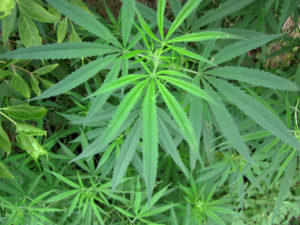
THC is a cannabinoid and a pyrane/pyranol derivative. It’s probably one of the more famous analogs to neurotransmitters on the list, as it comes from the very-popular cannabis plant. THC is not found in any other plants to date and contrary to popular belief, THC has not been found in hops. THC has, however, been found in Egyptian mummies, suggesting a long history of use. THC doses are usually about 5-20 mg (smoked) and 20-100 mg (edible). The human body possesses THC receptors in the central nervous system and in the peripheral pathways. THC is an analog to the endogenous substance Anandamide, which basically translates into “bliss” in Sanskrit.
There have been countless tests, experiments and studies involving THC throughout the years. It has been experimented with as a treatment for alcoholism, heroin and amphetamine addiction, emotional disturbances, muscle spasms, insomnia, glaucoma and more. THC dilates the bronchial passages when inhaled, and can produce benefits for those suffering from asthmatic symptoms. It was a traditional remedy in Roman times for herpes and still to this day has been known to kill the herpes virus. Synthetic THC exists under the commercial brand name Marinol.
Tropane Alkaloids
Tropane alkaloids are esters of tropanal that have been combined with a variety of acids. This is a nightshade family trait, only occurring in a select few other plant types. Atropine, hyoscyamine and scopolamine are often considered the most important or notable psychoactive tropanes. Tropane alkaloids are also special in being able to absorb through the skin, thus, ointments and plant preparations can often lead to psychoactive effects (such as preparing a tropane lotion, ointment or salve). Tropanes are very closely related, chemically, to cocaine and can even produce the same pharmacological effects.
Withanolides
Withanolides are unique psychoactive compounds in that they are not alkaloids. Instead, Withanolides are steroidal lactones (C28). Withanolides are most known for stimulating the immune system, but are also used for other medicinal and recreational purposes. Some cultures have used withanolides as antinflammatory medicine, and others have claimed they reduce the likelihood of tumor growth.
Yohimbine
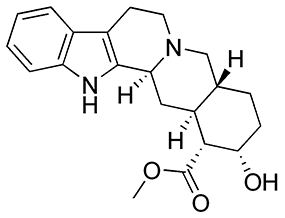
Yohimbine is an aspidosperma and indole alkaloid. Yohimbine stimulates the release of noradrenaline in nerve endings. This is a source of energy that literally arouses sexuality, especially in men, as it provides noradrenaline to the corpus cavernosum (resulting in an erection). Yohimbine is a strong aphrodisiac as it provides vasodilation to the genital organs. It also increases the excitability and stimulates the sacral medulla. Yohimbine is very commonly found in supplements for sex and arousal energy.
Historical and Modern Use of Active Constituents in Psychoactive Plants
Although there are many neurotransmitters, and many corresponding analogs in form of active psychoactive constituents from plants…only some of them have acquired cultural significance as a psychoactive substance. Still, these substances have all “earned their stripes” in the chemical and pharmacological world to some extent or another. And the future may hold many new instances psychoactive significance for substances long thought far from it, as very truthfully the history of psychoactive substances is not very old by any means, especially in relation to neurotransmitters. In fact, the first neurotransmitter was only discovered in 1921!
Despite how much there is left to discover, there are still many of these substances which have well-employed medicinal or recreational uses. And many of their uses will continue to grow in future years (for example, marijuana is becoming legal, and thus marijuana will likely become studied and used much more, leading to more cultural significance). This should come as no surprise, as it only makes sense that the use of active constituents in psychoactive plants fluctuates in a culture throughout time, at least in the earlier stages of its discovery. Regardless, it is fairly safe to assume some psychoactive constituents will continue to play a role in nearly all cultures for many years to come.
Disclaimer: The Botanical Shaman is not suggesting any illegal activity, including the harvesting, synthesizing, possession or use of illegal psychoactive substances. This article is for educational purposes only.
